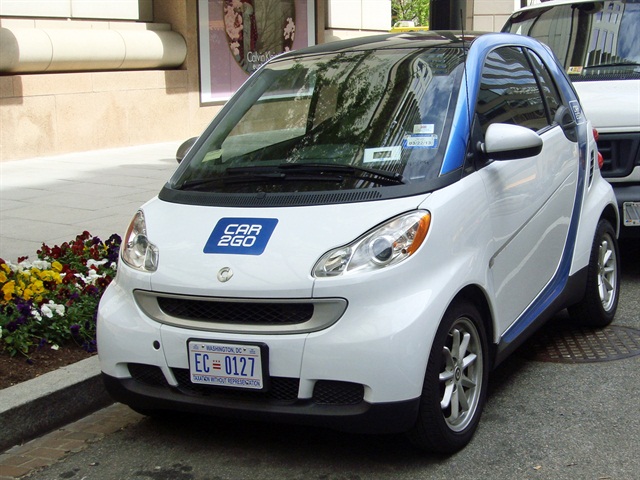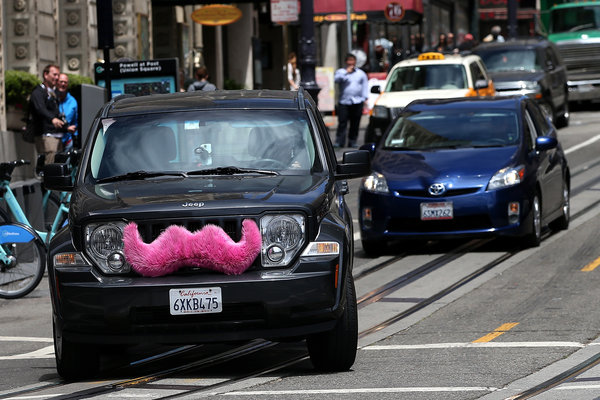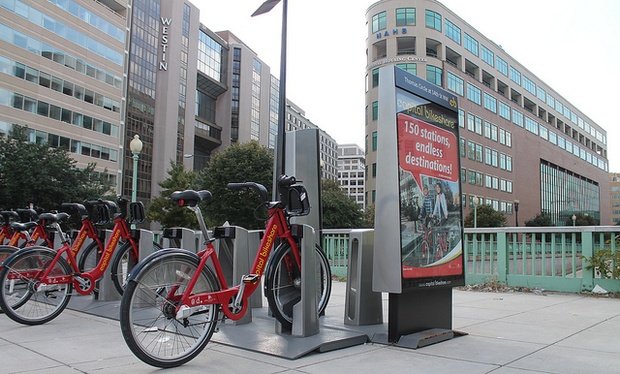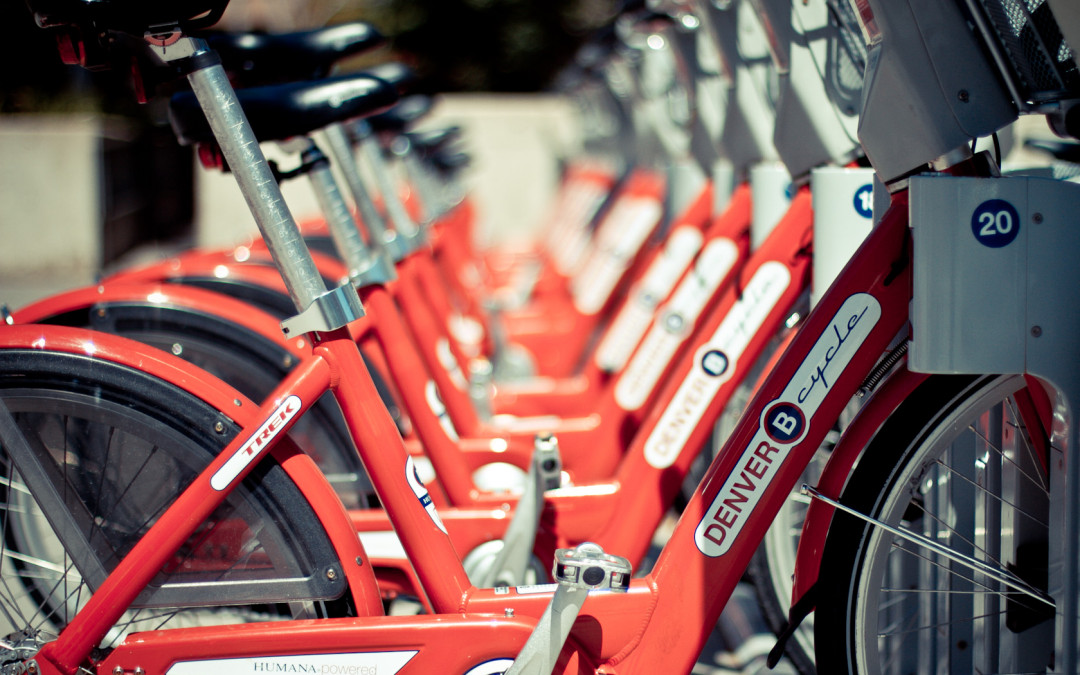
by mattchristensen00 | Aug 27, 2014 |
The Transportation Sustainability Research Center (TSRC), a provider of independent shared-use vehicle research, has released its car-sharing market outlook for 2014. “Growth in shared-use vehicle systems continues worldwide,” said Dr. Susan Shaheen, who worked with TSRC on the report. “In this issue of the Carsharing Outlook, we release the January 2014 numbers for the Americas (U.S., Canada, Mexico and Brazil). Our latest research initiatives include a study of personal vehicle sharing operations and impacts in North America, a second-year study of North American public bike sharing, a one-way car-sharing evaluation in North America and car sharing linked to electric bike sharing in the San Francisco Bay Area.” Highlights from the 2014 Carsharing Outlook include: As of Jan. 1, 2014, there were approximately 1,462,056 car-sharing members sharing 21,459 vehicles in the Americas (19 programs in Canada, 24 in the U.S., 1 in Mexico and 1 in Brazil). In the U.S., 1,228,573 members shared 17,179 vehicles among the 24 car-sharing operators. The 19 Canadian car-sharing operators said 224,523 members shared 4,174 vehicles. In Mexico’s car-sharing program, 5,634 members shared 50 vehicles. For Brazil, its car-sharing operator claimed 3,326 members shared 56 vehicles. In October 2013, TSRC organized the first Shared-Use Mobility Summit in San Francisco. This two-day event helped attendees understand and generate ideas for shared-use mobility in its many forms, including car sharing, ride sharing and peer-to-peer car sharing. Organizers hosted representatives from regulatory and planning agencies, along with allied industries, such as auto insurance companies, vehicle manufacturers and technology providers. This year, the Innovation in Mobility Public Policy Summit was held June 10-11 in Washington, D.C. In addition, the...

by mattchristensen00 | Aug 15, 2014 |
By Farhad Manjoo Today, like every weekday, about three-quarters of the nation’s adult workers — more than 100 million Americans — drove to work alone. It was ever thus: Americans, it seems, just don’t like to travel together. John Zimmer and Logan Green, the founders of the ride service Lyft, say they want to change that. Lyft, like its better-known rival Uber, lets you call a car using a smartphone app, and a driver who is also using the app rushes over to pick you up. This week, beginning in San Francisco, Lyft will introduce a new feature, Lyft Line, that instantly matches riders who are traveling between similar places at similar times, and offers each of them a deep discount to share a ride rather than go solo. The plan is a clever way for a car-sharing app to go beyond reducing our dependence on private car ownership — with car-pooling, it could end up reducing the number of cars on the road. he discounts offered by Lyft Line range from 10 to 60 percent off a standard ride; on average, the company expects people to save about 30 to 40 percent for sharing. These discounts would mean traveling from San Francisco’s popular Mission neighborhood to the Financial District for about $5 a ride; using standard Lyft, Uber or a taxi, the same ride might cost $9 or more. To read the entire article, click here....

by mattchristensen00 | Jul 28, 2014 |
By Eric Jaffe Over the past few days, several New York media outlets have reported that Citi Bike, the city’s popular but financially struggling bike-share system, will soon get a much-needed influx of cash. The new money would likely go toward improving docking stations and expanding the network to other parts of the city. A spokesman for Mayor Bill de Blasio told the Wall Street Journal that bike-share “has become part of our public transportation system, and there is a lot riding on its success.” Those words come at the same time as a new research study—first referenced here by former D.C. and Chicago transportation chief Gabe Klein—offers the most persuasive evidence yet that bike-share serves as a genuine form of public transportation. Past work has found that bike-share members decrease their car use considerably: According to one survey, 52 percent did so in Minneapolis, and 41 percent in Washington, D.C. The new, more fine-grained analysis of bike-share use in these cities reveals that its role in the transit system varies based on the character of the host city. In larger cities with dense cores like D.C., bike-share may replace shorter transit trips; in smaller, more dispersed cities like Minneapolis, it may expand the entire public transport network. Berkeley researchers Elliot Martin and Susan Shaheen report the findings in an upcoming issue of the Journal of Transport Geography: The denser the urban environment (particularly for rail), the more bikesharing provides new connections that substitute for existing ones. The less dense the environment, the more bikesharing establishes new connections to the existing public transit system. That’s the take-home message. For the study...

by mattchristensen00 | Jul 3, 2014 |
By Gabe Klein When we think about transit-oriented development, we typically think of rail stations. We know that in certain environments with density levels of X and height limits of Y, we can predict levels of investment of Z. But how would that equation hold up if Transit Oriented Development centered on a bike-share station, for instance, rather than rail stop? To answer that question, we need a better sense of how well bike-share performs as part of the larger transit system. We know that Americans have a deeply ingrained view of biking as a fun, recreational activity. (The Outdoor Association estimates that Americans spend $81 billion a year on bike-related expenses; airline tickets generate $51 billion by comparison.) I have theorized that this is why some people have such vitriolic reactions to cyclists. It’s like they’re angry that anyone could be having that much fun on their commute, when everyone should be suffering in traffic. With the advent of bike-share, there’s a move towards seeing cycling as a more basic form of transportation, especially in cities. The case for bike-share as transit is getting easier: A forthcoming study from Susan Shaheen and Elliot Martin reports that 40 percent to 55 percent of bike-share trips are work commutes. Their analysis shows that Capital Bikeshare in Washington, D.C., has displaced public transit trips—particularly Metro trips in the urban core—thereby increasing capacity on the congested rail network. It also increased transit ridership in less dense parts of the city and in the suburbs, providing a key first-to-last mile connection to rail and bus nodes. To read the entire article, click...

by mattchristensen00 | Jun 13, 2014 |
By Rachel Estabrook To get from Point A to Point B in Denver, people can drive themselves, take the bus or walk. But increasingly there are more options, and not just in Denver. Most of the new and sort-of-new services could only exist in the Internet age. Some, including Car2Go, Zipcar and OccasionalCar, allow people to borrow cars. B-cycle lends out bikes. And so-called ride-sharing services, such as UberX and Lyft, offer rides in strangers’ cars. They all employ smartphone applications, and while some don’t require customers to use apps, doing so makes using the services easier. And all of these services are part of the most radical shift in transportation since cars became commonplace. Susan Shaheen, co-director of the Transportation Sustainability Research Center at the University of California, Berkeley, says that on average nationally, membership in all the new services grew about 25 percent a year from 2008 to 2013. She expects growth will continue in a few ways: the number of services, the number of people using them, and the number of places they’re available. To read the full article, click...






